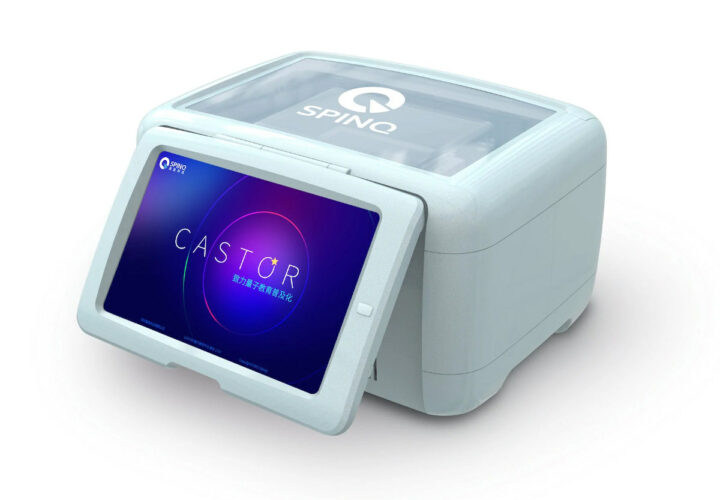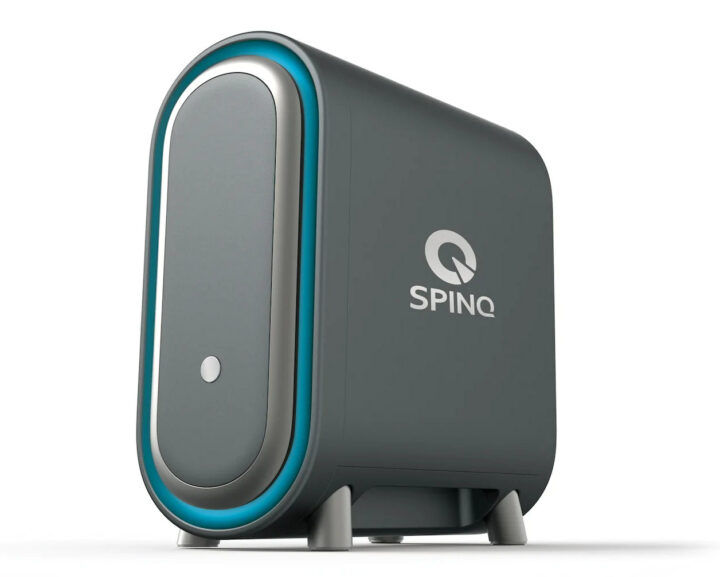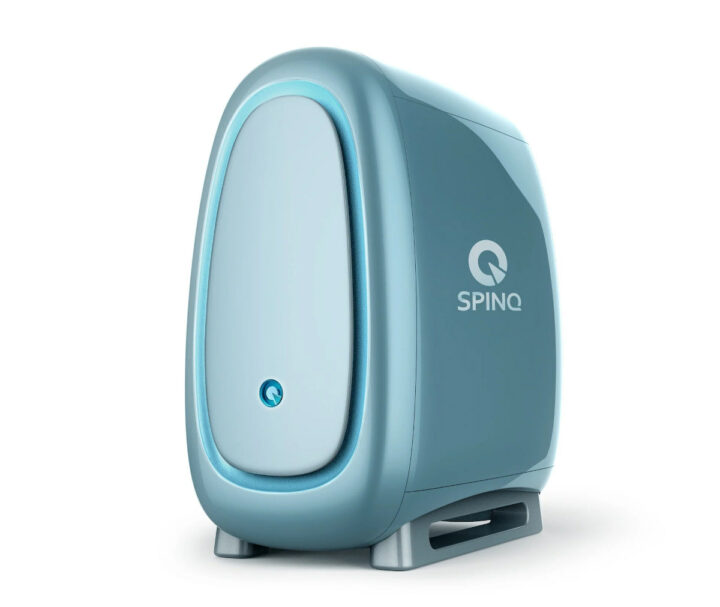Quantum computing promise a leap in the performance of applications relying upon parallelism using the properties of quantum physics like superposition, interference, and entanglement to perform computation instead of flipping “0” and “1” like traditional transistors. It will be used in scientific simulations, cryptography, machine learning, computational biology, and more.
So far, I had seen massive quantum computers in research labs, but companies like Intel and IBM are working on providing quantum processors with hundreds and thousands of qubits that should eventually be found in supercomputers. It’s unclear to me whether we’ll ever see “quantum accelerators” in embedded processors, and in any case, it would be many years away. But if you are interested in better understanding the technology and playing around with quantum computing, SpinQ is selling 2-qubit and 3-qubit quantum computers for the education market: Gemini Mini, Gemini, and Triangulum.
Gemini Mini quantum computer
Specifications:
- Number of qubits: 2 Qubits
- Coherence time: >20ms
- Number of 1-qubit gate operations: >30gates
- Number of 2-qubit gate operations: >10gates
- Qubit frequency (H): 27±1.5MHz
- Qubit frequency (P): 11±0.5MHz
- Number of RF channels: 2
- Pulse resolution: <100 ns
- 90° pulse width:-<100 us
- Phase resolution: <0.1°
- Receiver dynamic range: -114 to 60dBm
- Digital converter: 500MS/s; 16Bit
- NMR signal peak resolution <50Hz (FWHM)
- Rated power supply: 100-240V AC 50Hz/60Hz single phase
- Power consumption: ~60W
- Dimensions: 200 x 350 x 260mm
- Weight: 14kg
The computer includes CASTOR software with 18 demo algorithms and the ability to create custom algorithms. I could not find a link to the software on the company’s website, but Randy Stack happens to have one unit and shot several videos demonstrating the system.
It looks quite neat to learn about quantum computing with tutorials, courses, and simulation for up to 8-qubit, and access to the actual quantum computing demo.
Gemini
Specifications:
- Number of qubits: 2 Qubits
- Coherence time: >20 ms
- Number of 1-qubit gate operations: >200 gates
- Number of 2-qubit gate operations: >20 gates
- Qubit frequency (H): 41.3±2MHz
- Number of RF channels: 2
- Pulse resolution: <100 ns
- 90° pulse width: <30 us
- Phase resolution: <0.1°
- Receiver dynamic range: -114 to 60 dBm
- Digital converter: 500 MS/s; 8 Bit
- NMR signal peak resolution: <20 Hz (H2O) <41.3 Hz (experimental sample)
- Rated power supply: 100-240V AC 50Hz/60Hz single phase
- Power consumption: ~100W
- Dimensions: 600 x 280 x 530mm
- Weight: 44kg
Like the Gemini Mini, the Gemini is a 2-qubit quantum computer but comes with more 1-qubit and 2-qubit gates, and a different software – SpinQuasar – with 6 built-in demo algorithms and the ability to configure custom algorithms as well. As a side note, those “entry-level” quantum computers are rather large and heavy with the Gemini weighing at 44 kg.
Triangulum quantum computer
Specifications:
- Number of qubits: 3 Qubits
- Coherence time: >40 ms
- Number of 1-qubit gate operations: >40gates
- Number of multiple-qubit gate operations: >8gates
- Qubit frequency (F): 39.6±1MHz
- Number of RF channels: 2
- Pulse resolution: <10ns
- 90° pulse width: <20us
- Phase resolution: <0.1° Receiver dynamic range -114 to 60 dBm
- Digital converter: 800MS/s; 16Bit
- NMR signal peak resolution: <20Hz
- Rated power supply: 100-240V AC 50Hz/60Hz single phase
- Power consumption: 330W
- Dimensions: 610 x 330 x 560mm
- Weight: 40kg
The Triangulum is a 3-qubit computer running the same SpinQuasar software as the Gemini. It’s about the same size as the Gemini, and has fewer gates overall, but consumes a whopping 330W, so increasing the number of qubit appears to seriously impact the power consumption, at least for systems based on nuclear magnetic resonance (NMR) technology as the ones featuredhere. Also worth noting that SqinQ quantum computers are only for education, and as I understand it such systems can’t be used for any practical applications.
I have both good and bad news about the price and availability. The good news is that it is massively cheaper than building your own research lab and hiring scientists along with supporting staff. The less good news is that it is not exactly cheap either as the entry-level Gemini Mini sells for 1,188,000 JPY, or about $8,650 US, on Switch Science, while the Gemini goes for 5,720,000 JPY (~$41650) and the Triangulum for a cool 7,920,000 JPY (~$57,700).
Via Tom’s Hardware and PCWatch

Jean-Luc started CNX Software in 2010 as a part-time endeavor, before quitting his job as a software engineering manager, and starting to write daily news, and reviews full time later in 2011.
Support CNX Software! Donate via cryptocurrencies, become a Patron on Patreon, or purchase goods on Amazon or Aliexpress







